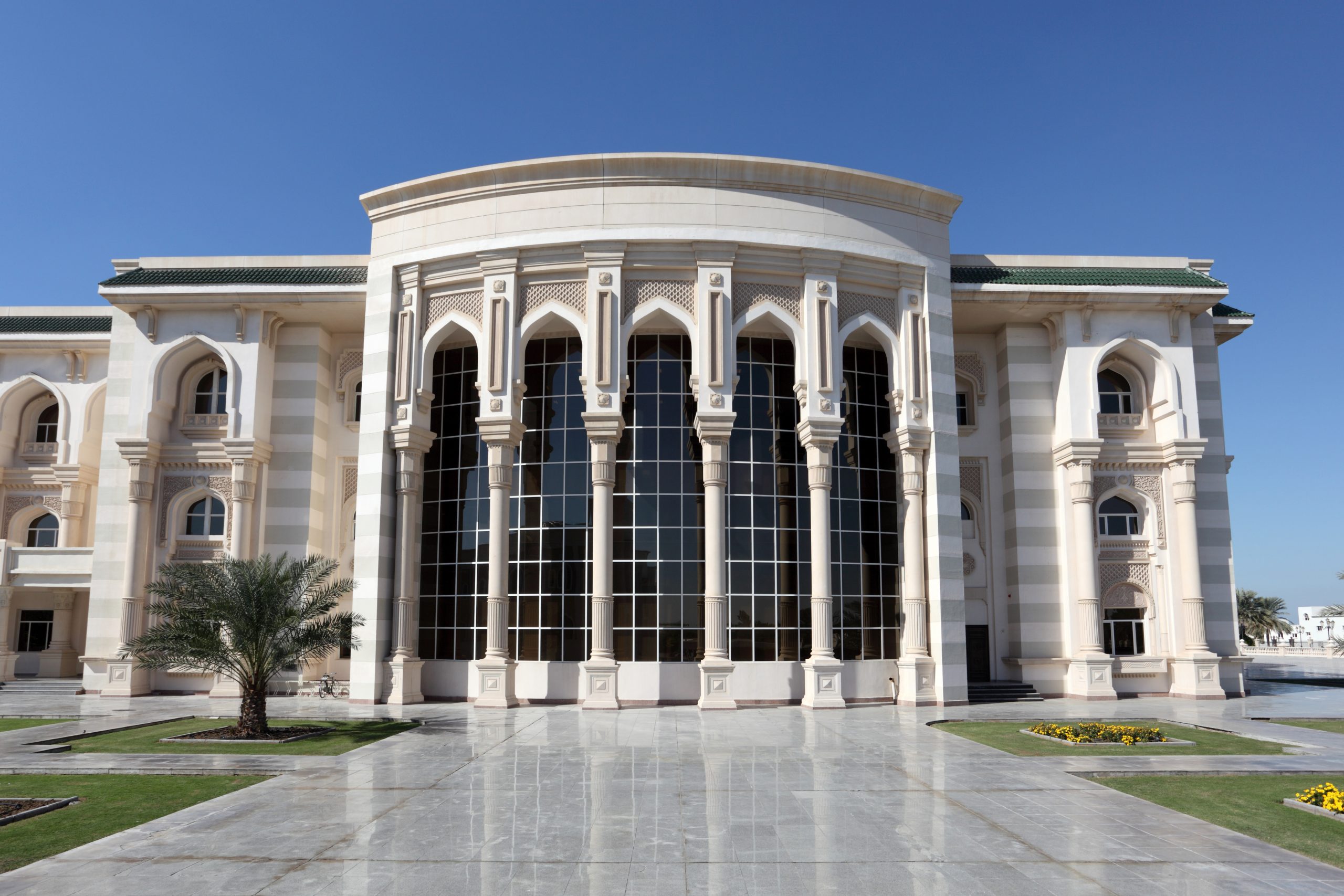In today’s fast-paced world, where technology evolves by the minute, and the expectations of the public are always on the rise, the need for government entities to stay ahead and deliver effectively has become increasingly vital. At the heart of this dynamic environment is the Executive Office, a key player in transforming how government works. It’s more than just an administrative arm; it’s the driving force behind government efficiency, innovation, and strategic foresight. This insight explores the pivotal role Executive Offices play in enhancing governance, acting as the engines of change and visionaries of strategic direction. With their unique position, Executive Offices ensure that government bodies are not just coping with today’s challenges but are also equipped and ready for the future. For executives and C-level leaders, understanding the value and impact of Executive Offices could be the key to unlocking new levels of success and preparedness in the ever-evolving landscape of governance.
In the swiftly evolving landscape of governance, where the pace of change and complexity presents both challenges and opportunities, the strategic empowerment of the Executive Office (EO) within government and semi-government entities emerges as a cornerstone of effective leadership and organizational excellence. This specialized body acts as a critical conduit, seamlessly bridging the gap between high-level strategic vision and the practical realities of daily operations. It ensures that the overarching goals and priorities of the leadership are not only clearly communicated and understood across all levels of the organization but also effectively implemented and realized.
The EO stands at the heart of modern governance, playing a pivotal role in enhancing organizational efficiency, strategic alignment, and decision-making. By offering a holistic view of operations and strategies, it enables leaders to make informed, agile decisions that propel the entity forward in alignment with its mission and objectives. This central body not only coordinates and streamlines efforts across different departments but also fosters innovation and adaptability, ensuring that the organization is not just responsive to immediate needs but is also strategically poised for future challenges and opportunities.
In essence, the Executive Office serves as a strategic partner to leaders and decision-makers, enhancing governance structures and processes to create a more dynamic, efficient, and forward-looking organization. As we delve deeper into the role and function of the EO, we will explore how its strategic engagement and operational oversight can significantly enhance the capacity of government and semi-government entities to fulfill their mandates more effectively, achieving greater impact and delivering value at every level of the organization.
Steering the Ship: How Executive Offices Guide Organizations Through Stormy Seas
Imagine you’re the captain of a big ship sailing through vast and sometimes stormy oceans. The sea represents the world of governance, filled with challenges like big waves (rapid changes), strong winds (public expectations), and hidden icebergs (unseen obstacles). As captain, your job is to keep the ship moving smoothly towards its destination (the organization’s goals).

Now, imagine you have a special team on board, your trusted crew, called the Executive Office. This crew helps you decide which direction to sail (strategic planning), warns you about storms ahead (future challenges), and makes sure every part of the ship works well together (coordination between departments). They’re like your navigators and engineers; all rolled into one. With the Executive Office, you can make smarter decisions faster, avoid dangers, and find the best routes, ensuring that everyone on the ship works together as a team to reach the destination safely and on time.
It’s like having a super-smart helper by your side, making sure your big ship not only stays afloat but sails successfully to where you want to go.
This way, even when the seas get rough, you’re ready and able to steer your ship through anything, all thanks to the guidance and support of your Executive Office team.
The Benefits of an Empowered Executive Office
An empowered Executive Office (EO) is the linchpin of effective governance, offering a multitude of benefits that transcend traditional administrative functions to truly transform how objectives are achieved within an organization. At its essence, an empowered EO fosters a culture of strategic coherence, ensuring that every effort and initiative undertaken is not only purposeful but also perfectly aligned with the broader mission and vision of the organization. This alignment is crucial, as it eliminates misdirection and inefficiency, streamlining the path to achieving set goals.
Beyond strategic alignment, the EO significantly boosts operational efficiency. Acting as the organization’s central nervous system, it optimizes the flow of information and resources, ensuring that decisions are made on solid, timely data, and actions are executed with precision. This operational agility allows the organization to navigate the complexities of modern governance with confidence, swiftly adapting to changes and seizing opportunities as they arise.
The EO’s role as a central hub for innovation cannot be overstated. It not only encourages but also facilitates the adoption of cutting-edge technologies and forward-thinking methodologies, revolutionizing public service delivery. This proactive approach to embracing change ensures that the organization stays ahead of the curve, meeting the evolving needs of the public with innovative solutions that enhance the quality and accessibility of services.
Furthermore, the EO is instrumental in cultivating a culture of accountability and transparency within the organization. By maintaining a clear overview of all operations and initiatives and implementing rigorous monitoring and evaluation mechanisms, the EO ensures that every action taken is accountable to the public and stakeholders. This transparency is key to building and maintaining trust, a critical component in the relationship between government entities and the citizens they serve.
Core Pillars of Executive Office Impact
The Executive Office stands as a beacon of strategic leadership within the government, driving significant impacts across various facets of governance. Beyond traditional roles, it lays down the foundation for a forward-thinking, agile, and accountable governance model. Emphasizing the core pillars rather than responsibilities highlights the EO’s proactive, dynamic approach to enhancing organizational performance and public service delivery. Here, we delve into the essential areas where the EO makes a substantial difference, ensuring that the organization not only meets but exceeds its objectives in serving the public interest.
Strategic Execution and Alignment: The EO transcends traditional strategic planning by actively ensuring that the leadership’s vision is executed across all organizational layers. It operates at the nexus of strategy and action, making it uniquely equipped to translate high-level objectives into concrete, actionable plans. This active execution role differentiates it from Strategy Offices, which primarily focus on planning and advisement.
Facilitating Cohesive Action: Within the complex ecosystem of government operations, the EO acts as the central orchestrator, ensuring unified action towards common goals. Unlike departments that may focus on collaboration within specific contexts, the EO has the authority and overview to enforce cohesive action, making strategic adjustments as necessary to maintain alignment with the overarching vision.
Dynamic Oversight and Adaptive Governance: Beyond static oversight, the EO engages in dynamic governance, continually assessing the landscape to ensure that initiatives remain aligned with strategic objectives amidst changing circumstances. This proactive stance on adaptive governance involves revising strategies in real-time, a step beyond the traditional accountability mechanisms.
Fostering an Innovation-Driven Culture: The EO’s commitment to innovation extends beyond adopting new technologies; it involves creating a culture where innovation is encouraged and valued at all levels. This cultural shift towards continuous improvement and openness to change ensures that the organization remains agile and responsive to evolving public needs.
Visionary Leadership and Strategic Stewardship: The EO provides strategic stewardship that guides the organization through complexities with clarity and foresight. This includes direct involvement in setting the direction, mediating between diverse organizational needs, and ensuring that the entity remains aligned with its foundational purpose and long-term vision.
Integrating Policies into Organizational Fabric: Unlike departments that may design or recommend policies, the EO ensures these policies are fully integrated and operationalized within the organization’s daily functions. It oversees the translation of policy into practice, ensuring seamless alignment between strategic intent and operational execution.
Strengthening Stakeholder Connections: The EO plays a pivotal role in deepening stakeholder relationships, going beyond engagement to foster genuine partnerships. It leverages these relationships to gain insights, build consensus, and align organizational objectives with stakeholder expectations, ensuring a harmonious path toward shared goals.
Navigating through Uncertainty with Resilience: The EO’s strategic oversight includes a significant focus on resilience, preparing the organization to face uncertainties and crises with confidence. This involves not just crisis management but also building an organizational capability to anticipate, adapt, and thrive in the face of challenges.
Commitment to Sustainable Success: The EO’s focus on sustainability ensures that strategies and initiatives are not only effective in the immediate term but also support the organization’s long-term health and success. This involves a careful balance of innovation, resource management, and foresight to ensure enduring impact and relevance.
By emphasizing these refined roles and functions, it becomes clear that the Executive Office is uniquely positioned to lead, integrate, and innovate within government and semi-government entities, ensuring not only the strategic alignment but also the effective realization of the leadership’s vision through coordinated agile action.
An empowered Executive Office is more than just a body; it is a transformative force that drives efficiency, innovation, accountability, and strategic coherence throughout the organization. Its broad-ranging responsibilities and proactive approach to governance make it an indispensable asset in the quest to deliver outstanding public services and achieve long-term organizational goals.
Distinguishing the Executive Office: Beyond Strategy and Project Management
In the complex tapestry of organizational structure, especially within government and semi-government entities, understanding the distinct roles and contributions of various bodies, such as the Executive Office (EO), Strategy Departments, and Project Management Offices (PMOs), is crucial. While each plays a vital role in the organization’s success, the EO stands apart in its capacity to act as the right hand to top leaders, focusing squarely on delivering value and results.
How the EO Stands Apart from Strategy Departments or Offices
Strategic Implementation versus Strategic Planning: While Strategy Departments are typically concerned with the development of long-term plans and strategic frameworks, the Executive Office is actively involved in the implementation of these strategies. The EO ensures that the strategic vision of the leadership is not only conceptualized but also brought to life through coordinated efforts across the organization.
Direct Access to Leadership: The EO operates with direct access to, and often under the direct supervision of, the highest levels of leadership within an organization. This positioning allows the EO to swiftly communicate leaders’ visions, decisions, and adjustments across all levels, ensuring agility and alignment that Strategy Departments, with their more removed operational stance, might not achieve.
How the EO Differs from Project Management Offices (PMOs)
Broad Organizational Scope versus Project-Specific Focus: PMOs typically concentrate on specific projects, overseeing their execution, timelines, and resource allocation. In contrast, the EO maintains a broader organizational scope, integrating multiple project outcomes with strategic objectives and ensuring that every initiative contributes to the overarching vision.
Advisory Role and Organizational Influence: Unlike PMOs, which provide project-related support and governance, the EO plays a pivotal advisory role to top leadership, influencing strategic decisions, policy formation, and organizational change. This influence extends beyond the realm of project management, touching every aspect of the organization’s strategic and operational landscape.
The EO as the Right Hand to Top Leaders
The Executive Office is, in essence, an extension of the top leadership, embodying their strategic intent and operationalizing their vision across the organization. It stands as a testament to the leadership’s commitment to transparency, efficiency, and innovation. The EO is instrumental in breaking down silos, fostering a culture of collaboration, and driving the organization toward its strategic milestones with a clear focus on delivering tangible value and results.
Delivering Value and Results: At its core, the EO is results-oriented, geared towards translating leadership decisions into positive outcomes. By maintaining an overarching view of the organization’s strategy and operations, the EO ensures that every action taken is purposeful, impactful, and aligned with the long-term goals, distinguishing itself as a crucial entity for achieving mission success.
While Strategy Departments and PMOs are key to providing the frameworks and governance for strategic planning and project execution, the Executive Office serves as the dynamic fulcrum of leadership vision, strategic action, and organizational cohesion. It is this unique blend of strategic oversight, direct leadership engagement, and operational excellence that sets the EO apart as the essential right hand to top leaders, steering the organization towards delivering unparalleled value and results.
In simple terms, the Executive Office acts as the leadership’s right hand, turning their vision into action across the whole organization, while Strategy Departments focus on planning and PMOs on managing specific projects. This makes the EO uniquely responsible for ensuring that every part of the organization works together seamlessly to achieve the top goals.
Overcoming Barriers: Embracing the Executive Office in Government Structures
While the value of an Executive Office (EO) in streamlining strategic execution and enhancing organizational agility is clear, its absence in many government entities can be attributed to a range of factors that stem from historical, structural, and cultural dimensions of public administration.
Tradition and Established Structures: Many government entities operate within long-standing, traditional frameworks that rely on hierarchical, departmentalized structures. The introduction of an EO represents a significant shift towards a more integrated and agile approach, which can challenge established norms and processes.
Awareness and Understanding: There may be a lack of awareness or understanding of the EO’s distinct role and its potential to transform governance and operational effectiveness. Without clear examples and success stories, it might be difficult for entities to visualize how an EO could be implemented and the specific benefits it would bring.
Perceived Overlap with Existing Functions: Some entities might perceive the functions of an EO as overlapping with those of existing departments, such as Strategy or Planning departments, without recognizing the unique, overarching integration and execution role of the EO.
Resource Constraints: Establishing an EO involves dedicating resources, including leadership talent and financial investment, to a new organizational structure. In contexts where resources are constrained, the decision to allocate them toward establishing an EO may require careful consideration and justification.
Cultural Resistance to Change: Institutional inertia and resistance to change can also play a significant role. Transforming organizational culture to embrace a more dynamic and integrated approach to strategy and operations, as facilitated by an EO, can be a challenging process.
Navigating the Path Forward
To address these challenges and encourage the adoption of Executive Offices, it is essential for leaders and decision-makers to engage in open dialogue about the changing landscape of governance and the need for more agile and integrated organizational structures. Highlighting successful implementations of EOs, clarifying the distinct value proposition of such an office, and demonstrating how it complements rather than duplicates existing functions can help overcome resistance and pave the way for transformative change.
While the integration of an Executive Office into government entities presents undeniable advantages for strategic coherence and operational efficiency, navigating the path toward its adoption requires addressing a complex interplay of structural, cultural, and resource-related factors. By fostering a deeper understanding of the EO’s unique role and building a compelling case for its value, government entities can begin to make the organizational shifts necessary to meet the demands of modern governance.
GICC’s Role in Facilitating Transformation
GICC Management Consulting stands at the forefront of this transformative journey, offering unparalleled expertise and support to government and semi-government entities ready to embrace change. With a deep understanding of the unique challenges and opportunities within the public sector, GICC provides strategic guidance, operational insights, and change management strategies essential for successfully integrating an Executive Office. Our approach is tailored to each entity’s specific context, ensuring that the transition not only enhances strategic execution and governance but also aligns with long-term visions and goals. Through collaboration, we help entities navigate the complexities of organizational change, leveraging our global insights and local expertise to foster environments where Executive Offices can thrive.
In an era marked by rapid change and increasing demands on public services, the need for government entities to adapt and evolve has never been more pressing. The Executive Office emerges as a beacon of innovation and strategic agility, offering a pathway to more responsive, efficient, and effective governance. As entities contemplate this transformative step, partnerships with experienced consultants become invaluable. Together, we can redefine the landscape of public administration, ushering in a new era of governance that is not only equipped to meet the challenges of today but is also resilient, adaptable, and forward-looking, ready to embrace the opportunities of tomorrow.
In the quest for enhanced governance and operational excellence, the journey is continuous, and the pursuit of excellence never ceases. With the right vision, strategy, and partners, government and semi-government entities can unlock their full potential, ensuring that they not only meet but exceed the expectations of the citizens they serve. GICC Management Consulting is committed to being a part of this journey, guiding entities towards a future where governance is transformed, and public value is maximized for a better, more efficient tomorrow.

 WhatsApp
WhatsApp

